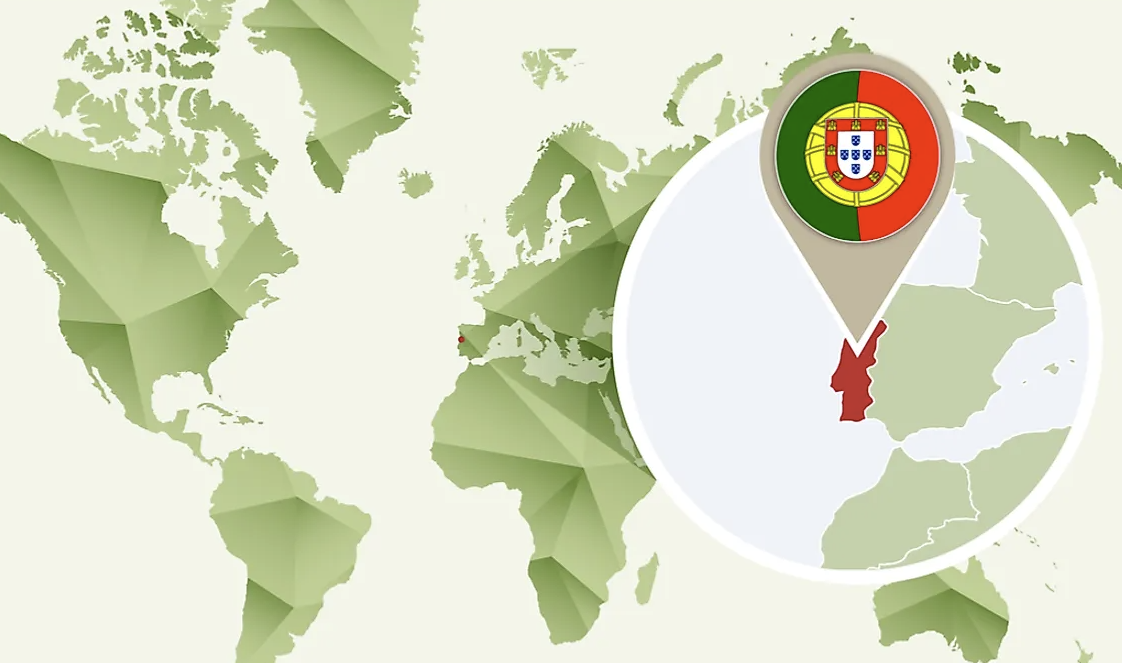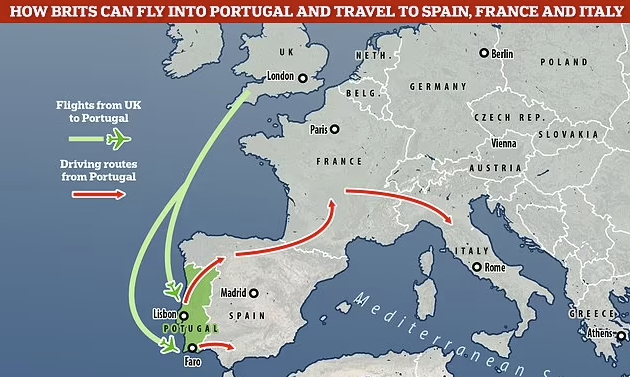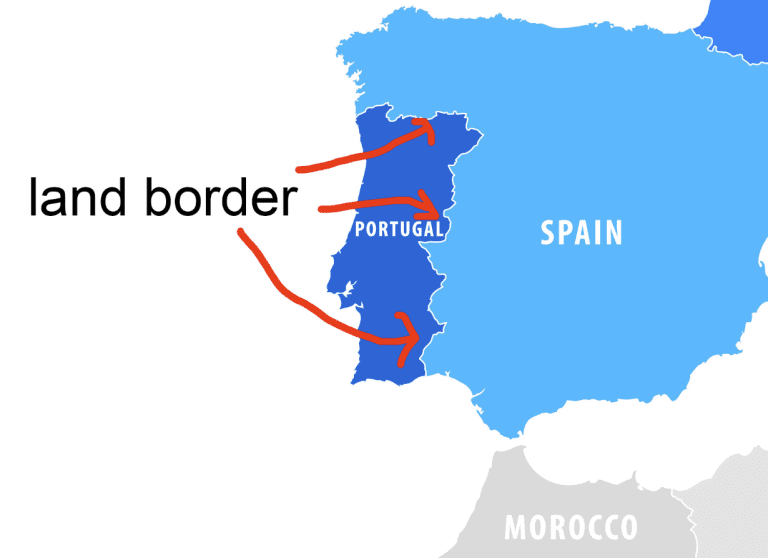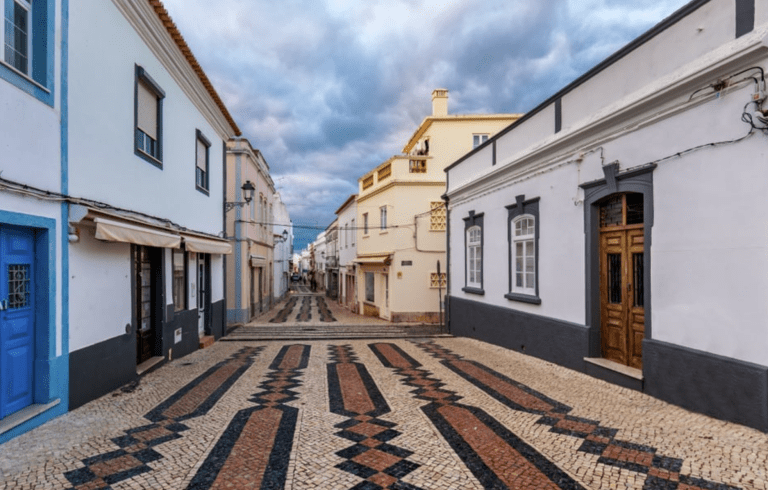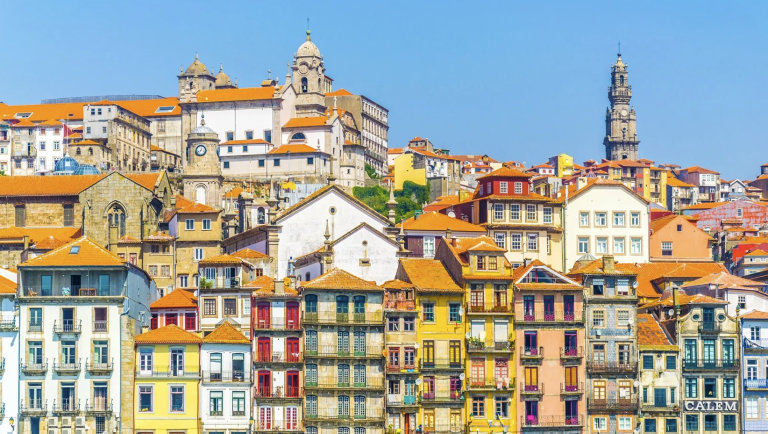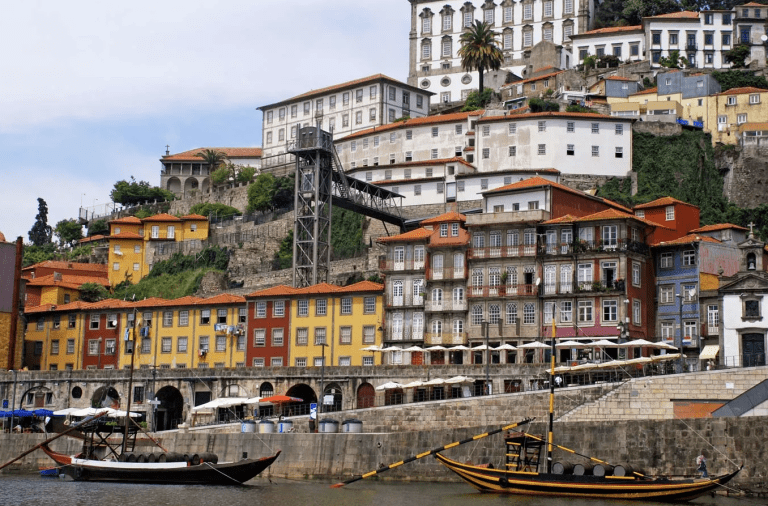Have you ever wondered what continent Portugal is in? Situated on the Iberian Peninsula and surrounded by the Atlantic Ocean, Portugal is a European nation steeped in culture and history.
In this comprehensive guide, we will delve into Portugal’s geographical location within Southern Europe. We’ll explore its historical background from early settlements by Celtic Lusitani to Roman rule influence. We’ll also discuss Portuguese maritime exploration and empire building that shaped it as one of the key European countries.
We will take a virtual tour through Lisbon – the capital city renowned for its unique blend of culture and commerce, before venturing beyond to other noteworthy cities such as Viana Do Castelo, Braga, and Guimares. You’ll get insights into what makes these places tick.
As an active member state within the European Union (EU), Portugal plays a significant role on global stage which we shall highlight in detail. Furthermore, we’ll shed light on southern region’s diverse landscapes and cultures especially The Algarve tourism scene.
To ensure your travel experience is seamless when visiting this part of Europe; language proficiency among locals & public transport options across country including remote getaway destinations like Madeira Azores Archipelagos are discussed at length too. So if you’ve been curious about what continent Portugal is in or simply want to learn more about this fascinating nation – keep reading!
Portugal: Where History Meets Geography
Portugal, the land of explorers and pastel de nata, sits on the edge of Europe like a cool kid at the back of the class. It shares its borders with Spain, making it the Iberian Peninsula’s hip neighbor.
Portugal: The Oceanic Powerhouse
Thanks to its prime spot on the Atlantic Ocean, Portugal became the OG of maritime power. They were sailing the seas and trading like nobody’s business before it was cool.
Celtic Lusitani: The OG Settlers
Before the Romans showed up, the Celtic Lusitani were rocking it in Portugal. These ancient tribes left behind some seriously cool archaeological evidence that gives us a peek into their lives.
Roman Rule: The OG Influencers
The Romans came, they saw, and they conquered Portugal. They left their mark on the country, building towns like Lisbon and Porto that are still thriving today. You can still spot their epic aqueducts and ruins scattered around.
Oh, and did we mention that the Portuguese language evolved from Latin? Thanks, Romans.
Portugal is like a patchwork quilt of influences, with Mediterranean cuisine and Moorish-inspired Fado music adding to its unique tapestry. It’s a nation with captivating diversity.
Portuguese Maritime Exploration & Empire Building
In the era of discovery, Portugal became a boss at sailing the seas. They were like, “Move over, Spain.” and went on to build one of Europe’s biggest overseas empires. It was a big deal and totally shaped modern-day Portugal.
Rivalry between Portugal and Spain
Portugal and Spain were like frenemies during the Age of Discovery. Columbus sailed for Spain, but it was Vasco da Gama from Portugal who found a shortcut to India. Talk about one-upping your neighbor. These voyages brought Portugal mad wealth and power.
Establishment of Overseas Empires
Successful expeditions meant Portugal got to claim new lands. By the 16th century, Portugal had established an expansive empire across Africa, Asia, Oceania and South America. Places like Goa in India and Macau in China still show off their European architecture mixed with local vibes.
- Goa – A former Portuguese colony known for its stunning beaches and vibrant nightlife.
- Macau – An autonomous region on the south coast of China that was under Portuguese control until 1999, making it the last European colony in Asia.
Transition from an empire to a democratic republic
The empire started to fade away in the mid-20th century when colonies started demanding independence. But it wasn’t until the Carnation Revolution (Revolucao dos Cravos) on April 25th, 1974, that Portugal became a chill democratic republic. It was like a peaceful coup that changed everything.
If you want to know more about this crazy time, check out RTP Ensina’s article on how the revolution ended imperial rule.
Lisbon – The Capital City of Culture and Commerce
As the heart of Portugal, Lisbon pulsates with a vibrant blend of historical charm and modern dynamism. This city isn’t just the political capital but also serves as an economic hub and cultural epicenter for Portugal.
Food, Music & Dance Culture in Lisbon
The food scene in Lisbon is a gastronomic delight offering everything from traditional Portuguese dishes to innovative fusion cuisine. Seafood lovers will be thrilled by the fresh catch served at local eateries while dessert aficionados can indulge their sweet tooth with delectable pastries like Pastel de Nata.
In terms of music and dance, Fado reigns supreme here. A traditional form of Portuguese singing that’s often associated with pubs (‘fadistas’), sailors, bohemians, and outlaws, Fado has been inscribed on UNESCO’s list of Intangible Cultural Heritage.
Major Renewal Projects Post-European City of Culture Designation
Lisbon was designated the European City of Culture back in 1994, leading to major renewal projects that transformed it into one attractive metropolis today. These initiatives included restoration works on monuments such as Jeronimos Monastery or Belem Tower alongside the development of new public spaces, including the Expo ’98 site now known as Parque das Nacoes. The impact these efforts had upon the cityscape cannot be overstated, contributing significantly to its current vibrancy.
The Jeronimos Monastery, a Manueline-style architectural marvel dating back to the 16th century, stands testament to this fact. Similarly, the Belem Tower, a fortified tower located along the Tagus River banks, has become an iconic symbol of the city, representing the maritime exploration era when the country emerged as a global power.
Meanwhile, the transformation of the former industrial wasteland into a thriving urban park complete with concert venues, an aquarium, and a cable car ride, etc., as part of the Expo ’98 project, showcases the successful integration of old and new within Lisbon’s landscape, making it a must-visit destination for any traveler exploring Europe.
In essence, Lisbon offers something for everyone, whether you’re a history buff, culture vulture, gourmet enthusiast, or adventure seeker. Given its abundant offerings, Lisbon’s allure is evident in the millions of visitors it receives annually.
Lisbon, the capital city of Portugal, is a vibrant blend of historical charm and modern dynamism. It offers a gastronomic delight with traditional Portuguese dishes and innovative fusion cuisine, as well as being the birthplace of Fado music. The city has undergone major renewal projects since being designated the European City of Culture in 1994, transforming it into an attractive metropolis with iconic landmarks such as Jeronimos Monastery and Belem Tower.
Exploring Beyond Lisbon – Other Noteworthy Cities In Portugal
The beauty of Portugal extends far beyond its capital city, Lisbon. Portugal offers a plethora of unique landscapes and cultural experiences, making it an ideal destination for those seeking something out of the ordinary. Check out some of the other cities in Portugal that should be included on your trip.
Viana Do Castelo’s Unique Attractions
Located in the northern region of Minho, Viana do Castelo is known for its traditional Portuguese architecture and beautiful natural scenery. Take a ride on the funicular railway or hop in a car to reach Santa Luzia Hill, where you’ll be rewarded with stunning views. Don’t miss the Basilica de Santa Luzia – an architectural masterpiece offering panoramic views over the town and coastline.
Braga’s Cultural Heritage Sites
Heading southwards, Braga will captivate you with its mix of ancient Roman ruins and modern shopping districts. Explore Braga Cathedral (Se de Braga), Bom Jesus do Monte Sanctuary, and Sameiro Sanctuary – historical sites that will transport you back in time.
Guimares’ Tourist Hotspots
Last but not least on our list is Guimaraes – often referred to as ‘the birthplace of Portugal’. Its medieval center, a UNESCO World Heritage Site, will charm you with its narrow streets and well-preserved buildings dating back centuries. Immerse yourself in history at the Historic Centre Of Guimaraes.
All these cities offer unique experiences for visitors from around the world, making them must-visit destinations during any trip through mainland Europe. Whether you’re exploring historic landmarks or indulging in local culture through food, music, and dance, each place has something special waiting just for you.
Portugal: A Dynamic EU Member State
Since joining the EU in 1986, Portugal has been a key player in shaping continental politics and economics. This small but mighty country contributes big bucks to the EU budget while also receiving substantial funding for development projects.
The Impact of the Anglo-Portuguese Alliance
The Anglo-Portuguese Alliance, dating back to the Middle Ages, has had a huge influence on Portugal’s international relations. It has helped secure its position in global organizations like NATO and UNO, shaping foreign policies even today.
Portugal’s Economic Contribution
Despite its size, Portugal pumps a‚¬1.598 billion annually into the EU’s budget. Talk about punching above your weight. And that’s not all – Portugal receives a‚¬3.384 billion from EU funds every year, more than double what it contributes. Portugal utilizes EU funds to upgrade its infrastructure and raise the quality of life for citizens.
This mutually beneficial relationship between Portugal and the EU ensures a fair distribution of re#s, with each member contributing according to their capacity.
A Closer Look at Recent Fund Allocation:
- Rural Development Program: A chunk of the funds goes towards promoting sustainable farming practices and conserving biodiversity in the countryside. (#)
- Cohesion Policy: Another significant portion is allocated to reducing regional disparities and enhancing socio-economic cohesion among member states. (#)
- Youth Employment Initiative: A substantial amount is dedicated to providing better job opportunities for young people, reducing unemployment rates, and boosting overall productivity. (#)
The Diverse Landscapes and Cultures Within the Southern Region of Portugal
When it comes to the southern region of Portugal, diversity is key. This region of Portugal has a distinctive mix of cultures and landscapes that have been impacted by multiple European nations, such as France, Italy, Greece, and Serbia.
Diversity in the Southern Region’s Landscape
The landscape here varies from cold rocky northern coasts to mountainous interiors. The interior parts offer breathtaking scenic views, perfect for nature hikes or drives. You’ll find rolling hills dotted with vineyards and stunning cliffs overlooking the sea.
For coastal lovers, there’s plenty to explore too. From pristine beaches with golden sands and turquoise waters in Algarve to charming fishing villages along the coast – there’s something for everyone here.
The Algarve Tourism Scene
Located in Portugal’s southernmost region, Algarve is a highly sought-after tourist destination for travelers from all over the world. Its beautiful coastline features sandy beaches framed by limestone cliffs. You can enjoy water sports like surfing and sailing, golfing on world-class courses, or simply relaxing under the sun while savoring local cuisine. Renting a car is advisable if you want to navigate this beautiful terrain at your own pace.
In addition to its natural beauty, Algarve is also known for its lively nightlife scene. Bars and clubs stay open until the early hours of the morning, offering visitors a chance to let loose and enjoy themselves after a day of exploring. Whether you’re looking for a quiet retreat or a bustling resort town, Algarve has something to cater to every type of traveler, making it a must-visit destination when touring the southern region of Portugal.
Language Proficiency and Transportation Facilities for Travelers
If you’re planning a trip to Portugal, don’t worry about language barriers. English is widely spoken in major cities and tourist hotspots, so you’ll have no trouble communicating with the locals.
Language Proficiency Among Locals
In fact, Portugal ranks 18th out of 100 countries in terms of English proficiency, according to a recent study by EF Education First. So whether you’re ordering food or asking for directions, chances are the locals will understand and respond to you in fluent English.
Public Transport Options Across the Country
Moving around Portugal is a breeze thanks to its well-developed public transportation system. Major cities like Lisbon and Porto have efficient metro systems, and buses connect smaller towns across the country. Taxis and Ubers are also readily available if you prefer private transport.
- Buses: The bus network operated by Rede Expressos covers almost every town and city in Portugal.
- Metros: Both Lisbon and Porto have extensive metro networks with frequent services throughout the day.
- Taxis & Ubers: These can be easily hailed through apps or found at taxi stands located near popular areas such as shopping centers or train stations.
Madeira and Azores Archipelagos as Remote Getaway Destinations
For a unique and secluded getaway, the Madeira or Azores archipelagos are excellent destinations to explore. These islands, located off the northwest African coast, boast amazing scenery from verdant hills to shimmering oceans. They are becoming increasingly popular among visitors every year. You can find detailed information about how to best explore these islands on websites like VisitPortugal.com’s guide on Madeira and Azores.
To sum it up, traveling through Portugal promises an experience full of ease, convenience, and adventure. Whether you’re navigating bustling city streets using public transportation, communicating with friendly locals who speak good English, or exploring remote island getaways, Portugal has got you covered.
Traveling in Portugal is convenient and easy, as English is widely spoken and the country has a well-developed public transportation system. Visitors can explore popular cities like Lisbon and Porto using metros or buses, while also considering off-the-beaten-path destinations like the Madeira or Azores archipelagos for unique travel experiences.
Conclusion
Portugal is in Europe, where they have a rich cultural heritage and are active in the European Union.
Lisbon, the capital city, has great food, music, and dance, while other cities like Viana Do Castelo, Braga, and Guimares have their own unique attractions.
The southern region has diverse landscapes and locals speak English, making it easy to get around using public transportation or explore remote destinations like Madeira and the Azores.

